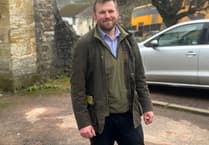WILDCATS could be reintroduced to Exmoor in a bid to help strengthen the moor’s ecology after an absence of more than a century.
Devon Wildlife Trust is recruiting a project officer to oversee an 18-month feasibility study into plans to bring back the UK’s only remaining native cat species.
The trust's director of nature recovery, Peter Burgess, said appointing a wildcat project officer was only the beginning of the process.
Mr Burgess said: “There is a lot for us to do before this becomes a reality.“Much of this will involve working with local communities to see if reintroduction is feasible.
“As yet we have no scheduled date for any animals to be released.
“Wildcats are the UK’s rarest mammal and are on the verge of extinction in Scotland, their last refuge.
“They are now subject to urgent species recovery action and we want to investigate the possibility of the South West being part of this.”
The wildcat project officer would be the first post of its kind in England and an appropriate one for the Westcountry, which had been one of the last strongholds for wildcats.
Evidence suggests a small population of wildcats may have survived on Exmoor until little more than 100 years ago.
European wildcats used to live throughout the UK and were particularly prolific in the Westcountry, but they now survive only in Scotland where they are on the verge of extinction and subject to urgent action to save the species.
Hunting and loss of habitat reduced the numbers of wildcats until they eventually went extinct in England and Wales in the 18th century.
Conservationists now believe the animals played an important ecological role in the countryside and hope to be able to bring the cat back from the brink.
Mr Burgess said: “The UK is one of the most nature-depleted countries in the world.
“The reintroduction of key species such as wildcats is part of our wider work to see wildlife and wild places restored.”
The project officer will be be tasked with assessing the suitability of different localities for the animal’s return.
They will lead scientific assessments, a social feasibility study, and a comprehensive public engagement programme.
The wildlife trust is working in partnership with the Wildwood Trust, Derek Gow Consultancy, and Forestry England, with the University of Exeter as project advisers.
The decision to explore wildcat reintroduction followed a preliminary ecological feasibility study carried out by the Vincent Wildlife Trust (VWT).
VWT’s report concluded there were areas which warranted further exploration for wildcat reintroduction, including the Westcountry, and the north and west of Wales.
The wildcat is similar to a domestic ‘tabby’ but larger, stockier, and with a black-banded bushy tail, and other markings on their bodies which make them recognisably different to their domestic cousins.




